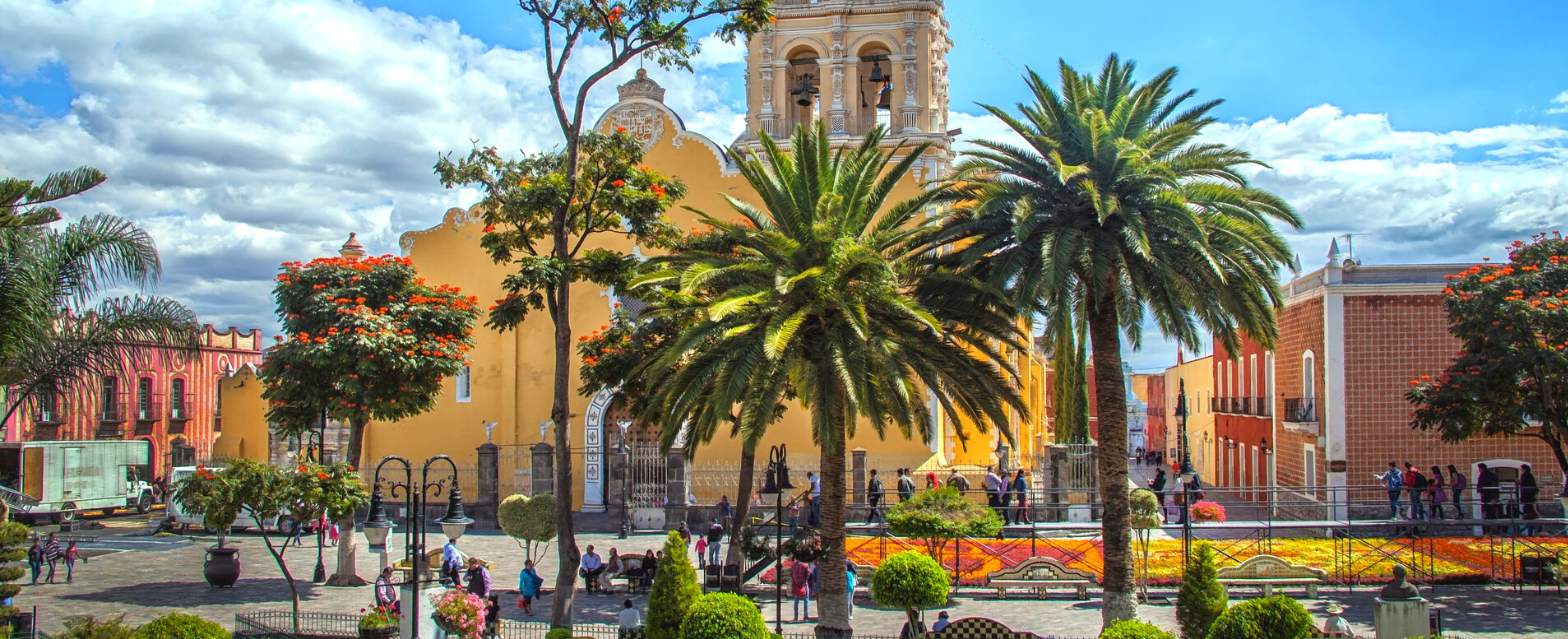San Miguel de Allende may sound like the name of a church tucked away in an old city, but it’s so much more.
This historical city, also known as SMA, has been named Best Small City in the World by readers of Condé Nast Traveler for several years in a row, beating out other, mostly European, tiny cities.
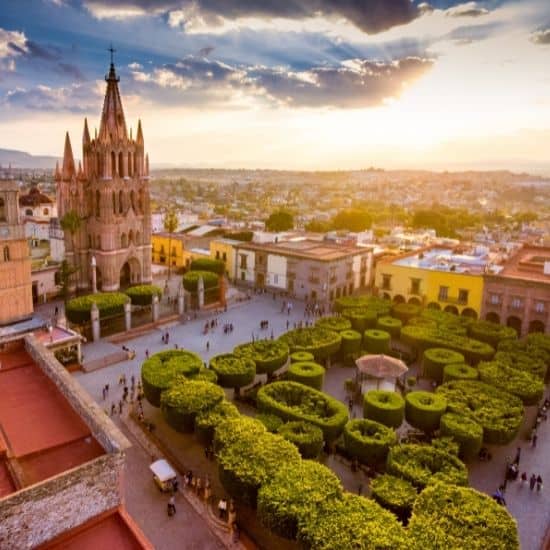
The charm of this town is unique with its cobblestone streets, colorful facades on Spanish- Colonial architecture, and abundance of art sprinkled throughout the city. Cultural influences have shaped it, including the indigenous Chichimecca, the French, and the Spanish.
The city’s name comes from one of the Spanish Franciscan monks who founded the city, Juan de San Miguel. The last part of the city’s name honors his native son, Ignacio Allende.
The city has a population of approximately 140,000, with about 14,000- 16,000 of those people being expats. The influx of expats dates back to the time after World War II when veterans could come to the city to take art classes that the GI Bill covered. Since then, it has been a hub for artsy and creative expats, making it a great place to retire in Mexico.
Many retirees work their entire life doing what they must do so they can one day do what they want. So if you’re ready for a relaxing life of color, food, history, and art this might be the city for you!
Location
San Miguel de Allende is in the north-central part of Mexico in the state of Guanajuato.
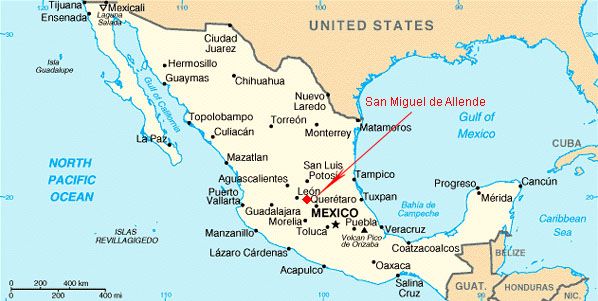
It’s far from the buzz of beachside cities, like Cancun or Cabo San Lucas, giving it a completely different atmosphere culturally and a much different climate. Right in the center of the country, it’s hugged by beautiful landscapes and nature while still having the conveniences of a small city.
The city is located at the intersection of four arroyos, allowing it to develop infrastructure to control and utilize the water for its residents. The Laja River flows through the city, eventually emptying out into the Ignacio Allende Reservoir, an important part of the city and the surrounding area’s infrastructure and survival.
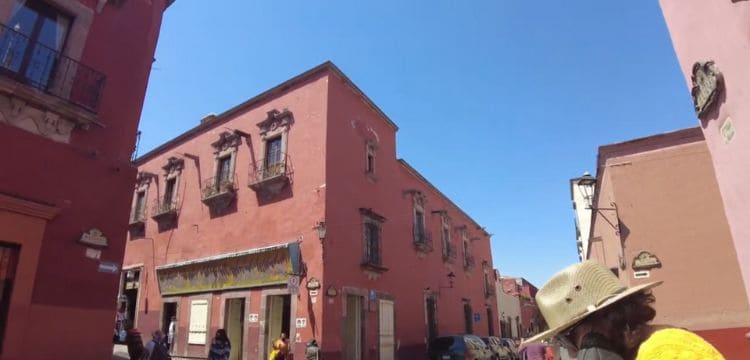
Getting to San Miguel de Allende
Nestled between two other historical cities in Mexico: Guanajuato and Queretaro. It is 169 miles from Mexico City, or approximately a four-hour drive. All three cities have airports where you can fly and then take ground transportation.
The city does not have an airport. And the closest one is Queretaro, an hour away.
The next closest airport is the Leon/Guanajuato airport, which is about an hour and fifteen minutes away.
Since this is a very popular city to visit, several options for getting from the airport to the city include a group shuttle, a private driver, or a taxi.
Weather in San Miguel de Allende
The weather in San Miguel de Allende is generally mild and warm year-round. In addition to having the four seasons of spring, summer, fall, and winter, the city also experiences rainy and dry seasons.
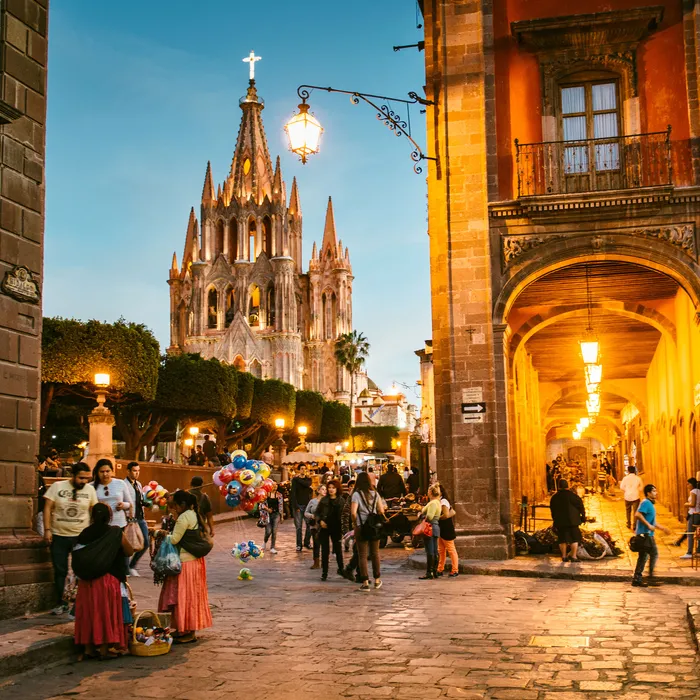
The rainy season runs from around June through September, during which approximately 75% of rainfall occurs. It has average high temperatures ranging from the high 70s to the low 80s, and its low temperatures are in the 50s in the evening and night.
And for most of the year, as long as you have a light jacket, you’ll be comfortable as you explore the city.
Best time to visit San Miguel de Allende
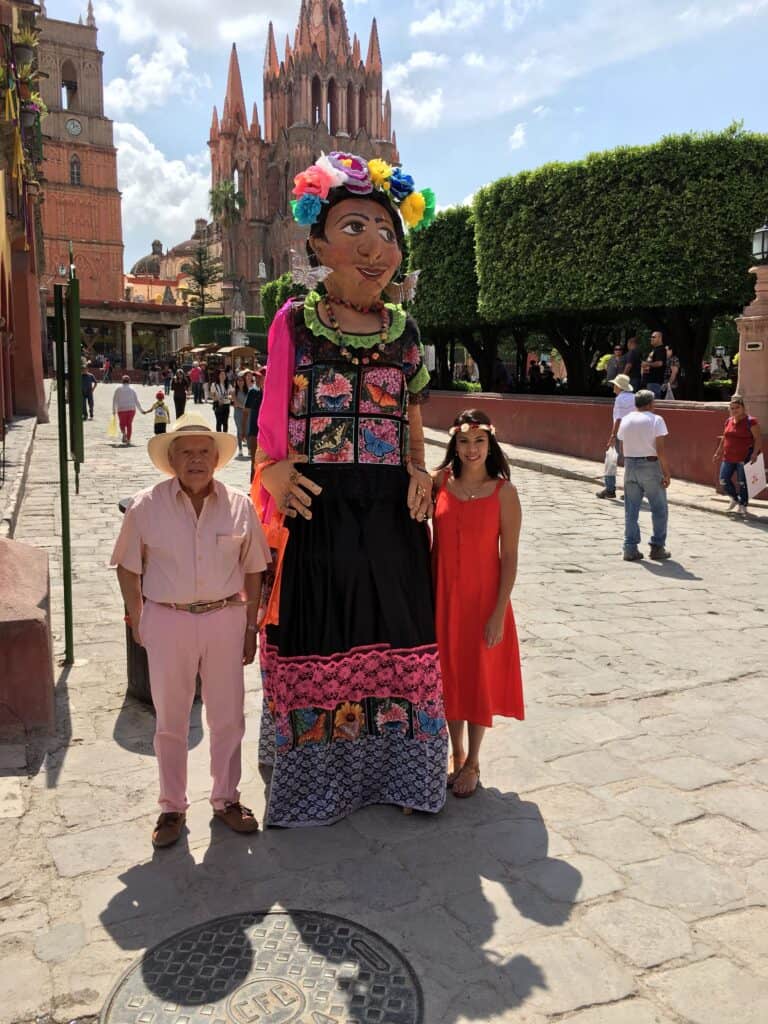
That being said, the best time of year to visit would be during the fall and winter when most of the dry season occurs. Visiting any time during November through April, you will experience temperature highs in the 70s and lows in the 40s and 50s at night.
And because it has over 300 days of sunshine throughout the year, you’ll enjoy sunny days almost every day!
So there’s no need to worry about frizzy hair or sweating through your clothes for the most part when visiting. However, the weather can be very dry, which can make your allergies worse.
Getting around San Miguel de Allende
Restaurants, shops, and homes surround the downtown area.
If you decide to stay in this central location, walking to get almost anything you need will be easy.
As you move away from the city’s center, it becomes less dense, with restaurants and shops becoming farther apart. You have a few options to get around these parts of the city. But there are taxis, public buses, and colectivos throughout the city.
Buses and Taxis
The buses run throughout the city and even stop at locations on the city’s outskirts. There are several bus routes throughout the city, which are identified by number. They also identify their routes by displaying their final destination on the front.
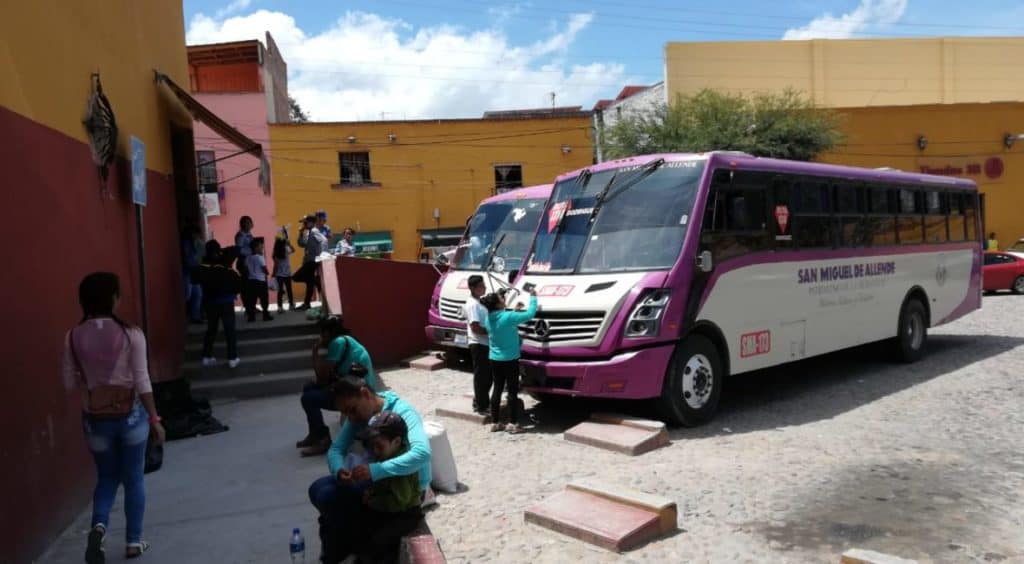
Costing approximately $10 MXN ($0.60 USD), the bus is affordable for almost anyone.
Of course, you can pay more for convenience with a taxi or rideshare. Taxis generally cost between $50-80 MXN ($4-7 USD), depending on where you want to go.
Popular rideshare apps used include Uber and Didi. They can be used by downloading the app onto your phone.
In Mexico, it’s common for riders to offer to pay for rideshares in cash by messaging the drivers on the app. This helps to ensure that the drivers don’t cancel the ride.
Things to See in San Miguel de Allende
There are a lot of things to do. Including various sites ranging from stunning architecture to natural landscapes. Some top attractions. Some of our top picks are:
· Parish of San Miguel Archangel
· Fabrica La Aurora (art gallery and shopping)
· El Jardin
· Instituto Allende (historic art institute)
· Museo Historico
Food Scene in San Miguel de Allende
The city is massively influenced by its art culture, with vibrant colors clinging to the Spanish-Colonial architecture. That vibrancy flows from the buildings to the people, to the food, which is art.
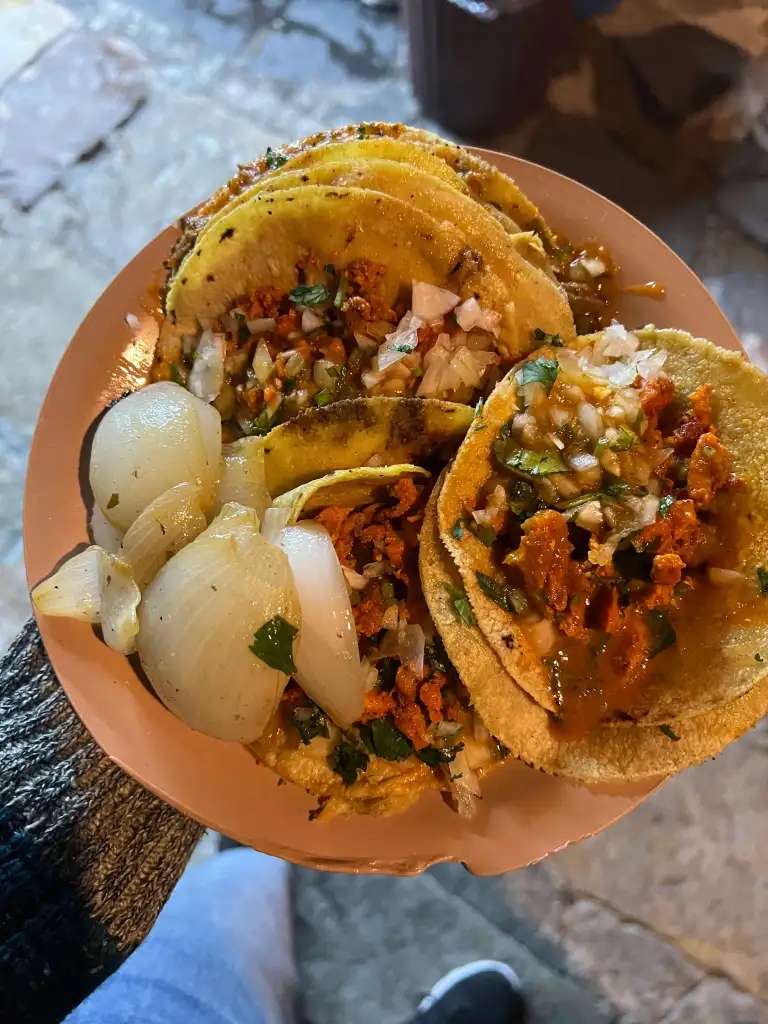
The food scene is so impressive that the professional cooking competition TV show, Top Chef, chose it as the destination for its finale for season 12.
While the food scene has exploded in the city, with high-end restaurants in luxury hotels, there are still plenty of places to get local and affordable authentic food.
Unique Food in San Miguel de Allende
The food that is local to the city is influenced by readily available ingredients and the cultures that have impacted the area, mainly the indigenous and Spanish.
One such dish is enchiladas mineras. Which is a fried tortilla filled with chicken and smothered in a red guajillo sauce. Delicious and not spicy.

Another unique treat to San Miguel de Allende is tumbagón, a sweet wafer-like treat. They are available at local bakeries and are made of wheat, sour orange, anise, cinnamon, and powdered sugar on top. They are said to have come from Europe when two friars came to the area and founded the city. These local sweets have a bit of history and legend tied to them and are enjoyed by all.
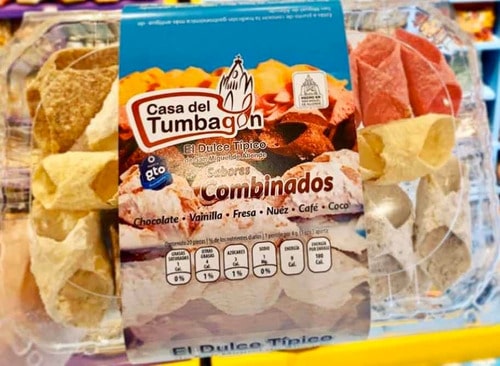
Local produce in San Miguel de Allende
The climate around San Miguel de Allende allows for specific fruit and vegetables to be grown and thus used a lot by regional chefs.
One of those is a fruit called xoconostle, a fruit of the prickly pear variety. It looks similar to the prickly pear, but instead of being sweet, it’s naturally sour. Xoconostle grows on the cactus plant and is used in stews because of its tart flavor.
There are endless restaurants and food to try in San Miguel de Allende. You can also find typical Mexican food here, including tacos and flautas. It’s a great city to enjoy flavors and dishes filled with fresh ingredients, creativity, and love.
Attractions near San Miguel de Allende
The natural beauty that surrounds San Miguel de Allende makes it an attractive destination for expats, retirees, and tourists. Some attractions that are just outside of the city include:
- Cañada de la Virgen (archeological ruins)
- Hot Springs
- El Charco de Ingenio (botanical garden)
- Sanctuary of Atotonilco (church/sanctuary)
Places to live in San Miguel de Allende
Art, food, mild weather, and hot springs—what more could you want?
If you’re ready to make the leap and move to San Miguel de Allende, you’ll need to decide which neighborhood is best for you.
A nice perk of many of the houses and apartments in San Miguel de Allende is the common outdoor space in most of them. Throughout the city, you’ll see a lot of rooftop terraces that can be enjoyed year-round because of the mild weather.
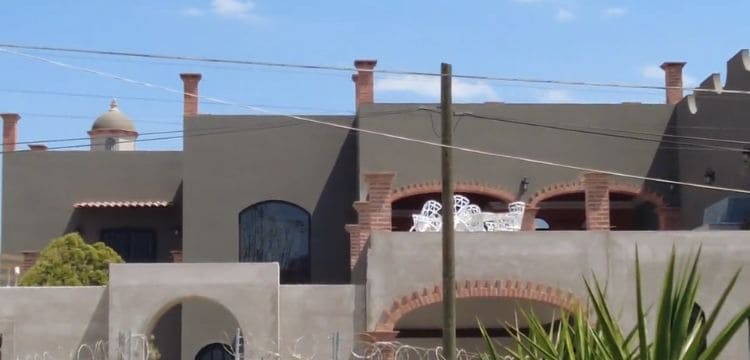
Neighborhoods in San Miguel de Allende
Centro
A popular neighborhood to live in is Centro. It is located at the heart of the city, making it easy to access restaurants, shops, and events if you choose to live here. This area has parks and street vendors, so living nearby is convenient if you like walking, fresh air, and food.
As with any city center, the more people there are, the more traffic and noise there will be. Many people who have lived previously in cities will be used to this type of noise and probably won’t have a problem with it.
Guadalupe and Guadiana
The neighborhood of Guadalupe is not too far from Centro but has a completely different vibe. It is an artistic neighborhood with murals painted on the side of buildings and lush plants on display. If you’re looking for the best of the best, the neighborhood of Guadiana may be for you. It’s considered the most desirable because of its convenient location to everything in the city and access to parks and restaurants.
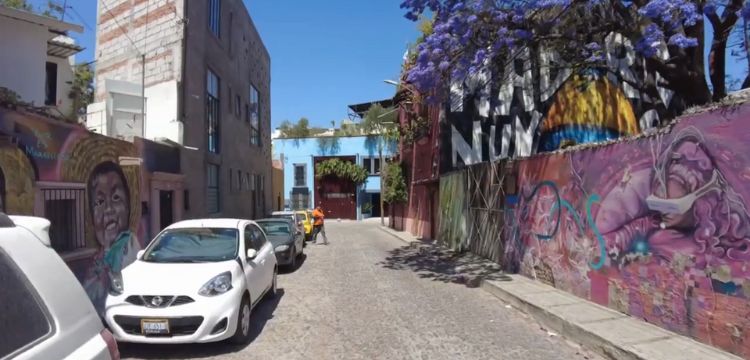
San Antonio
San Antonio is a great affordable neighborhood with many restaurants and markets with fresh food and baked goods. This area of the city is less congested and a bit quieter than Centro while still having conveniences.
Los Frailes
Los Frailes is a historic neighborhood in the city with larger homes. This neighborhood has more space due to its location being farther from Centro. There are open squares throughout it, which are used for live music, festivals, and open-air markets. This neighborhood generally has higher rental prices, and some homes have swimming pools, too!
Cost of Living in San Miguel de Allende
San Miguel de Allende offers a range of living options for couples with a comfortable lifestyle budget. Here’s a typical cost breakdown:
- Rent: $800 to $1,500 USD per month for a one- or two-bedroom apartment, depending on location and amenities.
- Groceries: $200 to $400 USD monthly for a mix of fresh local produce and some imported items. Also depending on your eating habits.
- Utilities: $50 to $100 USD per month for electricity, water, and gas (may vary with heating/cooling needs).
- Internet & Cable: $20 to $40 USD monthly for basic internet and cable packages.
- Dining Out:
- Local meals: $5 to $10 per person.
- Upscale dining: $30 to $50 for a dinner for two.
Overall, couples can expect to budget approximately $2,000 to $2,500 USD per month for a comfortable lifestyle, depending on their specific choices and needs.
This small city has something for everyone, and you can see examples of the neighborhoods in this video:
Hidden Gems
Transitioning from visiting to retiring in Mexico has various benefits. One is having enough time to get to know the city intimately. Once you lay your roots in San Miguel de Allende, you’ll learn about the hidden gems that tourists never get the chance to see. Here are a few to start you off:
· Barrio del Chorro (neighborhood with winding streets and a fantastic view of the city)
· Biblioteca Publica de San Miguel de Allende (historic library with a theater)
· Parque El Chorro (park with beautiful architecture and view of the city)
Move to San Miguel de Allende
San Miguel de Allende is an ideal city to retire in with its mild weather, walkability, and a never ending stream of art in murals, food, music, festivals, and more.
This colorful and complex city welcomes those seeking a relaxing yet stimulating move or retirement. If you’re sold on San Miguel de Allende, check out our COMPLETE Mexico Relocation Guide to get our complete list of local relocation tour guides and other important contacts. Start your journey the right way on moving to Mexico.





